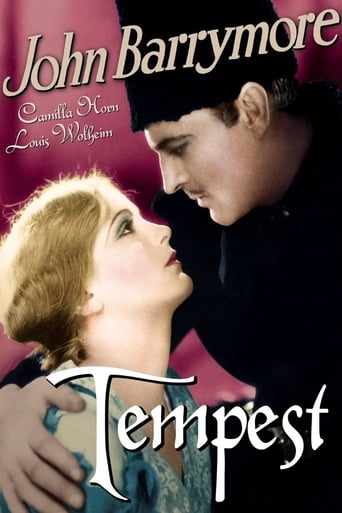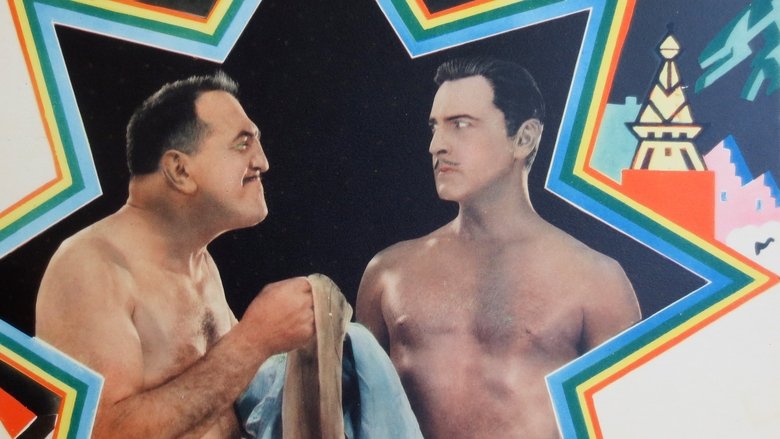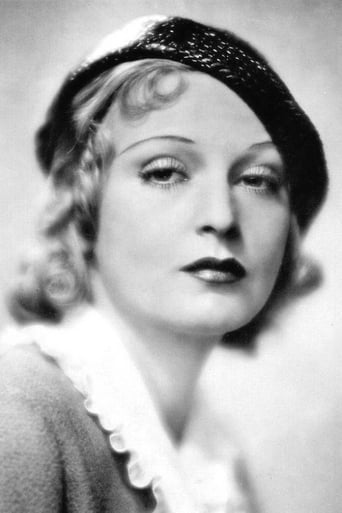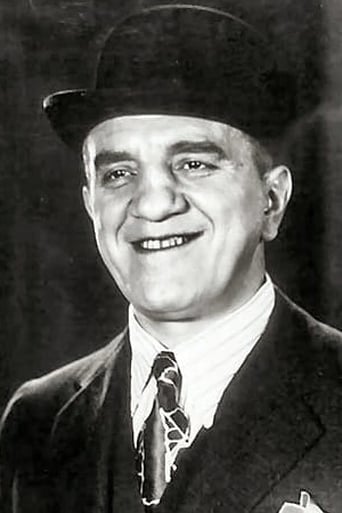

Tempest (1928)
In the final days of Czarist Russia, a peasant is raised from the ranks to Lieutenant. The other officers, aristocrats all, resent him, and make his life difficult. He falls in love with a princess, who spurns him. When he is caught in her room, he is stripped of his rank and thrown into prison. Then comes the Red Terror, and the tables are turned.
Watch Trailer
Cast
Reviews
Plenty to Like, Plenty to Dislike
everything you have heard about this movie is true.
In truth, there is barely enough story here to make a film.
The film never slows down or bores, plunging from one harrowing sequence to the next.
John Barrymore (Sergeant Ivan Markov), Camilla Horn (Princess Tamara), Louis Wolheim (Sergeant Bubba), Boris De Fas (peddler), George Fawcett (general), (Ulrich Haupt (captain), Michael Visaroff (guard), Lena Malena (Tamara's friend), Albert Conti (bit), Wilhelm von Brincken (examiner), and Michael Marke, Gregory Gaye, John Bleifer.Director: SAM TAYLOR. Adaptation: C. Gardner Sullivan. Original story and scenario: Erich von Stroheim. Based on a story by V.I. Nemirovich-Dantchenko. Uncredited script contributor: Lewis Milestone. Titles: George Marion, junior. Uncredited direction: Lewis Milestone, Victor Tourjansky. Photography: Charles Rosher. Art director: William Cameron Menzies. Costumes: Alice O'Neill. Music score: Hugo Riesenfeld. Set decorator: Casey Roberts. Wardrobe manager: Frank Donnellan. Technical adviser: Alexis Davidoff. Production manager: Walter Mayo. Production supervisor: John W. Considine, Jr. Producer: Sam Taylor.Copyright 11 October 1927 by Feature Productions, Inc. Presented by Joseph M. Schenck. Released through United Artists. New York opening at the Embassy, 17 May 1928. U.S. release: 11 August 1928. Sydney release at the Prince Edward, 19 October 1928 (ran 5 weeks). 10 reels. 9,300 feet.SYNOPSIS: Romance between a peasant soldier and a princess during the Russian Revolution.NOTES: Academy Award to William Cameron Menzies (shared with his "The Dove") for Art Direction (defeating Seventh Heaven and Sunrise). Also nominated for Cinematography, but lost to Sunrise. A silent film. COMMENT: Once thought lost, this large-budget movie has now been placed back in circulation. Unlike some other lost/found films which have recently surfaced, this one is not in the least disappointing.In fact it really was a lost masterpiece featuring superb performances not only from its star, Barrymore, German import Camilla Horn (making her Hollywood debut), and ever-reliable Louis Wolheim, but a most remarkable study in insane villainy by Boris De Fas. What makes this menacing portrait even more remarkable is the fact that De Fas does not seem to have made any other Hollywood films. None! So if you don't catch him in Tempest, you will miss one of the most unique character studies in the movies.Director Sam Taylor has also excelled himself in this instance, though he is aided by Rosher's superlative photography as well as Menzies' deservedly award-winning sets.All in all, an engrossing story with vivid characterizations, realized with panache, style, plus a consistently visually appealing finesse.
In Czarist Russia, a peasant officer (John Barrymore), resented by the aristocrats, falls in love with a princess.The version on Netflix streaming goes a bit fast, as in it is set to the wrong frames-per-minute. This works great for silent comedies (Keaton, Chaplin and Lloyd) but makes this seem a bit more silly than it ought to.Seeing as this film was made in 1928, there was time enough to look back at the revolution. Of course, that is not the intent, with this being a love story, but it is interesting to have a soldier who disapproves of the czar. We know (and the makers of this film knew) that was came after was not necessarily better. Perhaps people were still blinded at this point (we did not turn against Russia until after 1945).
I can't wrap my mind around the fact that Barrymore was in his forties when he made this film. He looks fit and fantastic, the true matinée idol. This is due in no small part to Rosher's astounding photography. This is a crazy, obsessional soap that may turn some people off, but John B. has some beautiful, moving moments that give me goosebumps. He was clearly still able to give his all at this point, and he does so here. His tearful scenes are believable and so well done. Camilla Horn was stunning and looked great with him, but she's so wooden that it dulls the effect a bit. Still, she had a long career in Germany, so I guess she couldn't have been so bad. Ivan is one big grey area when it comes to morality, and Barrymore conveys that very well.I wish he could have pulled it together long enough to save his career and life from the self-parodying buffoonery that he sank into as he dissipated. He breaks my heart on many different levels.
1928 was a year for Russian Revolution stories in Hollywood movies. Probably the best was von Sternberg's THE LAST COMMAND with Emil Jannings, Evelyn Brent and William Powell giving great performances. This piece has great performances from John Barrymore and Louis Wollheim, but the female lead, Camillia Horn, producer Joseph Schenck's mistress, gives a performance that is largely composed of staring haughtily. Well, it's the way her part is written, I suppose in this melodramatic tripe. She despises Barrymore, she loves Barrymore, she despises Barrymore, then comes the revolution....Even uncredited directing by Lewis Milestone couldn't help. Horn can't have been a bad actress with a sixty-year career in Germany, but she made this movie and the stinker ETERNAL LOVE in Hollywood, again with Barrymore under Lubitsch's direction and returned to Germany. Maybe she stared haughtily at Schenck too often.What is worthwhile in this film is the late silent camerawork, courtesy of Charles Rosher. The late 1920s produced camerawork that moved about like a soap bubble on the breath of imagination. The advent of sound tied it down to a neurotic adoration of the still shot that it did not begin to recover from for a quarter of a century.But this picture features camerawork that is astonishing. The party sequence, is balletic; the prison sequences trap you in bars of darkness and Rosher backlights everyone with a star halo that still takes your breath away, even in the scratchy prints that survive. This is one every fan fan needs to watch: not for the story, which is awful, not for the performances, some of which are excellent, but for the pictures. Look at every single frame. You won't regret it.


